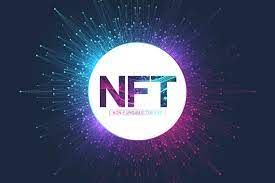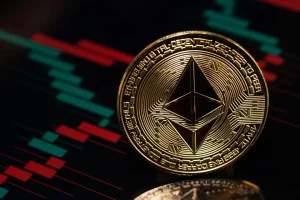HOW DOES NFT WORK

HOW DOES NFT WORK: What is it? In NFTs, ownership of unique digital items can be exchanged and the ownership of them tracked on the blockchain. NFT stands for non-fungible token and technically, it can be anything digital, including drawings, animated GIFs, songs, or items in video games. Online, they are frequently purchased and sold with cryptocurrencies. They are generally encoded using the same software as many cryptographic algorithms.
Non-fungible generally means it is not interchangeable with another product. Bitcoin is one example of fungible currency. Buy one bitcoin for another, and you will have the same amount. Unlike other trading cards, however, a unique trading card cannot be resold. Trading it for another card would give you something completely different.
Physical currencies and cryptocurrencies are fungible, meaning the two can be traded or exchanged for one another. The value of a dollar remains the same for as long as one dollar is worth another dollar, and the value of a bitcoin remains constant. Its fungibility makes crypto a trusted means of conducting blockchain transactions.
NFTs are unique. The NFTs have digital signatures that prevent them from being exchanged for or equal to one another (hence, not fungible).
An NFT is more than just a crypto coin, so what makes it so special? By storing extra information, the file is elevated above pure currency, enabling it to be used for any purpose. Various kinds of digital assets could be considered NFTs, but they include art, music, and digital files – anything deemed valuable that could be stored digitally. These collectibles are just like other physical items, except instead of receiving an oil painting to hang on your wall, you receive a JPG file.
WHAT ARE NFTs USED FOR?
By utilizing blockchain technology and NFTs, artists and content creators can effectively monetize their work. As an example, artists are no longer dependent on galleries and auction houses to sell their work. An NFT, in turn, allows them to keep more of the profits since they can sell it directly to consumers. Additionally, artists can program royalties into their software so they will receive a percentage of sales whenever their art is sold. It is an appealing feature because, in general, after the first sale of an artists’ work, they do not receive any future proceeds.
NFTs offers more than art as a way to make money. A variety of brands have auctioned off NFT art to raise funds for charities including Charmin and Taco Bell.
As of now, digital assets purchased inside a game still belong to the company that makes it, and gamers are just buying them temporarily for their entertainment. But NFTs mean assets now belong to the buyer and they can be bought and sold across the gaming platform with an added value based on who owned them before. It is even becoming possible to make games that are based solely on NFTs, showing how they are redefining the gaming industry.
HOW DO NFTs WORK?
NFTs are registered on a blockchain, a distributed ledger that records transactions. Blockchain is most likely known for being the underlying technology that makes cryptocurrencies possible. An NFT is typically held on the Ethereum blockchain; however, it can be stored on other blockchains as well.
NFTs, which are associated with the Ethereum blockchain, are individual tokens with extra information stored within them. A lot of people fail to realize that the extra information is what allows them to express themselves in the form of art, music, videos, etc., in the form of JPG, MP3s, videos, GIFs, etc. Likewise, since they have value, they can be purchased and sold just like other types of art – and their value is heavily influenced by the market and demand.
It doesn’t mean, however, that there is only one digital version of an NFT available on the marketplace. Copying an NFT is a common practice much the same way as art prints of an original are made, used, traded, and sold – but they do not have the same value as the original.
In addition, they get exclusive ownership rights. There can only be one owner of one NFT at a time. Due to NFTs’ unique data, they make it simple to check ownership and swap tokens between owners. Additionally, the owner is also able to store information on each token. As an example, artists can sign their artwork by putting their signature into an NFT’s metadata.
You now hopefully understand what NFTs are and how they work. Several real-world applications for non-fungible tokens have been demonstrated, but are they a technology for the future?
Over the next few years, it is difficult to say whether NFTs will become commonplace. These new products are gaining a lot of attention right now, as well as demonstrating several potential benefits. However, technology is still fairly young, and there are numerous challenges to overcome.





